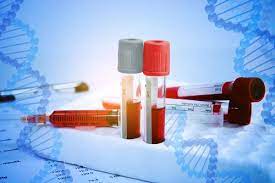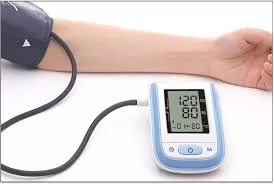Los Angeles, Feb. 3, 2025 – A groundbreaking blood test may rapidly distinguish between hemorrhagic (bleeding) and ischemic (clot-caused) strokes before patients reach the emergency room, potentially transforming stroke treatment, according to a preliminary study presented at the American Stroke Association’s International Stroke Conference 2025.
The speed of stroke diagnosis is critical, as delays can result in irreversible brain damage and worse patient outcomes. Current diagnosis methods rely on imaging, which can take hours due to the need for patient stabilization, transport, and scanning. However, the new test, which measures blood levels of glial fibrillary acidic protein (GFAP), could enable emergency medical teams to diagnose stroke type on the way to the hospital, expediting treatment.
Key Findings from the Study
Led by Dr. Love-Preet Kalra, a neurology resident at RKH Hospital Klinikum Ludwigsburg in Germany, the study assessed the effectiveness of GFAP as a biomarker for distinguishing stroke types. GFAP, a brain-specific protein, is released into the bloodstream when brain cells are damaged. It is already used in assessing traumatic brain injuries.
Researchers analyzed blood samples collected in ambulances before hospital arrival and found:
- GFAP levels were nearly seven times higher in hemorrhagic stroke patients compared to those with ischemic strokes (208 pg/mL vs. 30 pg/mL).
- GFAP levels were four times higher in hemorrhagic stroke patients than in those with stroke-mimicking conditions (208 pg/mL vs. 48 pg/mL).
- A GFAP level below 30 pg/mL effectively ruled out hemorrhagic stroke in patients with moderate to severe neurological deficits.
- Using age-based cutoff points, the test accurately predicted hemorrhagic strokes with 90%–95% accuracy.
- GFAP levels were higher in patients taking blood thinners, indicating increased vulnerability to hemorrhagic stroke in these individuals.
Dr. Kalra emphasized the potential impact of these findings: “Treatment to lower blood pressure and reverse blood-thinning medications could be initiated in the prehospital setting, significantly altering clinical practice.”
Challenges and Future Implications
While the results are promising, challenges remain. The test currently requires centrifugation (a process that separates blood components), and GFAP levels naturally increase with age, which could complicate interpretation in elderly patients. Additionally, most ambulances and emergency services lack access to point-of-care GFAP testing.
Dr. Louise D. McCullough, an American Heart Association expert volunteer, underscored the importance of larger studies to validate these findings: “GFAP could be a useful prehospital test for brain injuries, but its effectiveness depends on widespread availability of both the test and the necessary equipment in ambulances.”
Study Details
The study analyzed 353 individuals (average age: 75, 47% women) who arrived at the emergency room within six hours of stroke symptom onset. Among them:
- 76 had hemorrhagic strokes,
- 258 had ischemic strokes, and
- 19 had conditions mimicking strokes (e.g., seizures or migraines).
Blood was drawn before hospital arrival and tested using a portable blood analyzer, with final diagnoses confirmed through brain imaging.
Conclusion
If confirmed in larger studies, this blood test could revolutionize stroke care by enabling faster, more accurate prehospital treatment. This advancement could lead to earlier interventions, potentially improving survival rates and long-term outcomes for stroke patients.
Disclaimer: The findings presented are based on a preliminary study and require further validation in larger trials before being widely implemented in clinical practice.











